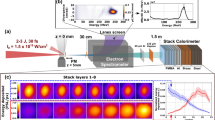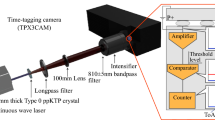Abstract
IN examining photographs of the ray tracks produced in air, C. T. R. Wilson (Proc. Roy. Soc. A, vol. 104, p. 1, 1923) found that two tracks which were undoubtedly pairs were not alike: one was sharp and the other was a diffuse track; that is, pairs exist of which the two components have been ejected with an appreciable time interval. He roughly estimates this time interval to be of the order of 0.001 of a second. The first track he attributed to the photoelectron ejected by the primary X-ray, and the second track to an effect of the resulting fluorescent radiation. It was decided to search by a more direct method for the existence of such phosphorescence in the secondary X-rays from solid radiators.
This is a preview of subscription content, access via your institution
Access options
Subscribe to this journal
Receive 51 print issues and online access
$199.00 per year
only $3.90 per issue
Buy this article
- Purchase on Springer Link
- Instant access to full article PDF
Prices may be subject to local taxes which are calculated during checkout
Similar content being viewed by others
Author information
Authors and Affiliations
Rights and permissions
About this article
Cite this article
BEARDEN, J. A Test for Possible X-ray Phosphorescence. Nature 113, 857–858 (1924). https://doi.org/10.1038/113857b0
Issue Date:
DOI: https://doi.org/10.1038/113857b0
Comments
By submitting a comment you agree to abide by our Terms and Community Guidelines. If you find something abusive or that does not comply with our terms or guidelines please flag it as inappropriate.



